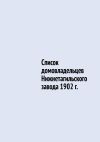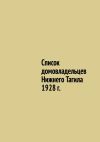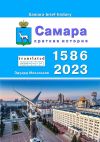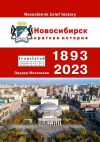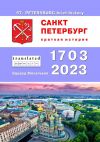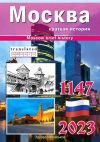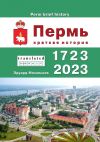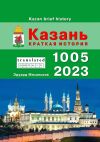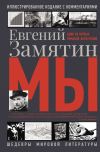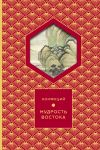Текст книги "Нижний Новгород. Краткая история"
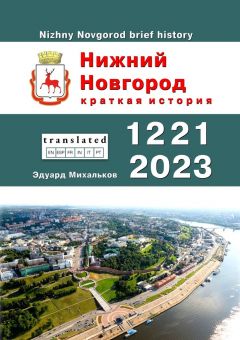
Автор книги: Эдуард Михальков
Жанр: Документальная литература, Публицистика
сообщить о неприемлемом содержимом
Текущая страница: 1 (всего у книги 2 страниц) [доступный отрывок для чтения: 1 страниц]
Нижний Новгород. Краткая история
Эдуард Михальков
© Эдуард Михальков, 2023
ISBN 978-5-0060-5198-0
Создано в интеллектуальной издательской системе Ridero
RU
Город Нижний Новгород был основан в 1221 году князем Юрием Всеволодовичем на месте слияния рек Волги и Оки. Первоначально он назывался Нижний Новгород, что означает «Нижний город». На высоком правом берегу Оки была построена деревянная кремлевская крепость.
В 1300-х годах Нижний Новгород становится важным торговым центром, связывающим Центральную Россию с Уралом и Сибирью. Стратегическое положение города на пересечении крупных рек способствовало развитию торговых связей. Первые каменные стены были возведены вокруг кремля в 1350 году.
При Иване Грозном в 1500-х годах внутри треугольного Кремля были построены новые массивные каменные стены, башни и церкви. За стенами, вдоль рек, сформировался торговый квартал и рынок. В 1583 году был построен первый водопровод.
К 1700-м годам Нижний Новгород превратился в процветающий торговый город, где проводилась Макарьевская ярмарка – один из крупнейших рынков России. Появилось купеческое сословие, которое способствовало строительству церквей, особняков и культурных учреждений. К 1760-м годам население достигло 30 тыс. человек.
В 1817 году Нижний Новгород стал столицей собственной губернии. По приказу Александра I город был реконструирован, в том числе построена новая красивая каменная набережная Волги. Были построены первые мосты через Оку, открыта духовная семинария.
Индустриализация ускорилась в конце 1800-х годов со строительством металлургических заводов, пароходов и железных дорог. Знаменитый инженер Владимир Шухов построил новаторские металлоконструкции по всему городу. К 1897 году население города составляло 115 тыс. человек.
После большевистской революции 1917 года некоторые церкви были разрушены, но основные отрасли промышленности были национализированы и процветали при коммунистическом режиме. Во время Второй мировой войны в город было эвакуировано более 500 заводов. В 1985 году началось строительство метрополитена.
В советский период Нижний Новгород превратился в один из крупнейших промышленных центров страны.
В 1930-х годах был построен Горьковский автомобильный завод, ставший важнейшим автопроизводителем в СССР. К 1980-м годам на ГАЗе работало около 100 тыс. человек, ежегодно выпускалось более 650 тыс. автомобилей.
В годы Великой Отечественной войны многие нижегородские предприятия были эвакуированы из западных областей СССР. В частности, Харьковский паровозостроительный завод был эвакуирован на завод «Красное Сормово». После войны завод стал одним из крупнейших в Европе по производству подвижного состава для железных дорог.
В 1950-1960-е годы был построен ряд новых гигантов индустрии – заводы «Сокол», «Теплообменник», радиозавод имени Ленина и другие. Развивалось производство радиоэлектроники, приборостроения, химической промышленности.
В 1970-1980-е годы продолжалось техническое перевооружение нижегородских предприятий. На крупнейших заводах (ГАЗ, «Красное Сормово», «Сокол») осваивался выпуск новых моделей продукции, увеличивались объемы производства.
Железнодорожное машиностроение – Нижний Новгород являлся центром разработки паровозов и дизель-поездов. Он обеспечивал более 50% локомотивов, используемых в СССР.
После 1991 года и распада СССР нижегородская промышленность пережила спад, вызванный системным кризисом. Многие предприятия сократили объемы производства, некоторые из них были закрыты.
В постсоветский период Нижний Новгород пережил возрождение, получив диверсифицированную экономику с ориентацией на торговлю, аэрокосмическую промышленность, радиоэлектронику и автомобилестроение. Была проведена масштабная реставрация исторического центра города.
Нижний Новгород сохранил свою историческую архитектуру и значение торгового центра. Среди достопримечательностей города – огромные стены Кремля и здание Арсенала, Дом губернатора, соборы XVIII века, современная Чкаловская лестница на Волжской набережной. В городе есть театры, музеи и крупные университеты.
Нижегородский машиностроительный завод – разработчик и производитель первых советских основных танков, в том числе революционного танка Т-34 времен Великой Отечественной войны.
Авиационный завод «Сокол» – разработчик и производитель первого в мире самолета-десантника, бомбардировщика ТБ-3 и бипланов ПО-2, широко применявшихся в годы Великой Отечественной войны.
Судостроительный завод «Красное Сормово» – построил первые советские атомоходы, в том числе ледоколы и прототипы подводных лодок.
Автомобильный завод «ГАЗ» – массовый производитель грузовых автомобилей, автобусов, легковых автомобилей и автокомпонентов под маркой «ГАЗ» с 1930-х годов.
Сейчас в Нижнем Новгороде проживает около 1,2 млн. человек. Город является важным экономическим, культурным и туристическим центром России.
EN
The city of Nizhny Novgorod was founded in 1221 by Prince Yuri Vsevolodovich at the confluence of the Volga and Oka rivers. Originally it was called Nizhny Novgorod, which means «Lower City». A wooden Kremlin fortress was built on the high right bank of the Oka.
In the 1300s Nizhny Novgorod became an important trade center linking Central Russia with the Urals and Siberia. The strategic position of the city at the crossroads of major rivers contributed to the development of trade relations. The first stone walls were erected around the Kremlin in 1350.
Under Ivan the Terrible in the 1500s, new massive stone walls, towers and churches were built inside the triangular Kremlin. Outside the walls along the rivers, a commercial quarter and market were formed. In 1583 the first water supply system was built.
By the 1700s Nizhny Novgorod had become a prosperous trading city, where the Makariev Fair, one of the largest markets in Russia, was held. The merchant class appeared, which contributed to the construction of churches, mansions and cultural institutions. By the 1760s the population reached 30,000 people.
In 1817 Nizhny Novgorod became the capital of its own province. By order of Alexander I, the city was reconstructed, including a new beautiful stone embankment of the Volga River. The first bridges over the Oka River were built, and a theological seminary was opened.
Industrialization accelerated in the late 1800s with the construction of metallurgical plants, steamships and railroads. Famous engineer Vladimir Shukhov built groundbreaking steel structures throughout the city. By 1897, the city had a population of 115,000.
After the Bolshevik Revolution of 1917, some churches were destroyed, but major industries were nationalized and flourished under the communist regime. During World War II, more than 500 factories were evacuated to the city. In 1985, construction of the subway began.
During the Soviet period, Nizhny Novgorod turned into one of the largest industrial centers of the country.
In the 1930s, the Gorky Automobile Plant was built, which became the most important automobile manufacturer in the USSR. By the 1980s, GAZ employed about 100,000 workers and produced over 650,000 cars annually.
During the Great Patriotic War, many Nizhny Novgorod enterprises were evacuated from the western regions of the USSR. In particular, the Kharkov Locomotive Plant was evacuated to the Krasnoye Sormovo plant. After the war, the plant became one of the largest in Europe in the production of rolling stock for railroads.
In 1950-1960s a number of new giants of industry were built – plants "Sokol", "Heat Exchanger", radio plant named after Lenin and others. Production of radio electronics, instrumentation, chemical industry was developing.
In 1970-1980s technical re-equipment of Nizhny Novgorod enterprises continued. The largest plants (GAZ, Krasnoe Sormovo, Sokol) mastered the production of new models of products, production volumes increased.
Railway engineering – Nizhny Novgorod was the center of steam locomotives and diesel trains development. It provided more than 50% of locomotives used in the USSR.
After 1991 and the collapse of the USSR, Nizhny Novgorod industry experienced a decline due to a systemic crisis. Many enterprises reduced production, some of them were closed.
In the post-Soviet period, Nizhny Novgorod experienced a revival, gaining a diversified economy with a focus on trade, aerospace, radio electronics, and automobile manufacturing. The historic city center was extensively restored.
Nizhny Novgorod has retained its historic architecture and importance as a trade center. Among the sights of the city are the vast walls of the Kremlin and the Arsenal building, the Governor's House, the cathedrals of the 18th century, the modern Chkalov Stairs on the Volga embankment. The city has theaters, museums and major universities.
Nizhny Novgorod Machine Building Plant – designer and manufacturer of the first Soviet main battle tanks, including the revolutionary T-34 tank during World War II.
Sokol Aviation Plant – designed and produced the world's first paratrooper airplane, the TB-3 bomber and PO-2 biplanes, which were widely used during the Great Patriotic War.
Krasnoye Sormovo Shipyard – built the first Soviet nuclear-powered ships, including icebreakers and submarine prototypes.
GAZ Automobile Plant – mass producer of trucks, buses, passenger cars and auto components under the GAZ brand since the 1930s.
Now about 1.2 million people live in Nizhny Novgorod. The city is an important economic, cultural and tourist center of Russia.
ESP
La ciudad de Nizhni Nóvgorod fue fundada en 1221 por el príncipe Yuri Vsevolodovich en la confluencia de los ríos Volga y Oka. Originalmente se llamó Nizhni Nóvgorod, que significa «Ciudad Baja». En la alta orilla derecha del Oka se construyó una fortaleza de madera en forma de Kremlin.
En el siglo XIV, Nizhni Nóvgorod se convirtió en un importante centro comercial que unía Rusia Central con los Urales y Siberia. La posición estratégica de la ciudad en la encrucijada de grandes ríos favoreció el desarrollo de las relaciones comerciales. Las primeras murallas de piedra se levantaron alrededor del Kremlin en 1350.
Bajo el mandato de Iván el Terrible, en el siglo XVI, se construyeron nuevos muros de piedra, torres e iglesias en el interior del Kremlin triangular. Fuera de las murallas, a lo largo de los ríos, se formaron un barrio comercial y un mercado. En 1583 se construyó el primer sistema de abastecimiento de agua.
Hacia 1700, Nizhni Nóvgorod se había convertido en una próspera ciudad comercial, donde se celebraba la Feria Makaryevskaya, uno de los mayores mercados de Rusia. Apareció la clase mercantil, que contribuyó a la construcción de iglesias, mansiones e instituciones culturales. En la década de 1760 la población alcanzaba los 30.000 habitantes.
En 1817 Nizhni Nóvgorod se convirtió en capital de su propia provincia. Por orden de Alejandro I, la ciudad fue reconstruida, incluyendo un nuevo y hermoso terraplén de piedra sobre el río Volga. Se construyeron los primeros puentes sobre el río Oka y se abrió un seminario teológico.
La industrialización se aceleró a finales del siglo XIX con la construcción de plantas metalúrgicas, barcos de vapor y ferrocarriles. El famoso ingeniero Vladimir Shukhov construyó estructuras de acero pioneras en toda la ciudad. En 1897, la ciudad contaba con 115.000 habitantes.
Tras la revolución bolchevique de 1917, se destruyeron algunas iglesias, pero las principales industrias se nacionalizaron y florecieron bajo el régimen comunista. Durante la II Guerra Mundial, más de 500 fábricas fueron evacuadas a la ciudad. En 1985 comenzó la construcción del metro.
Durante el periodo soviético, Nizhni Nóvgorod se convirtió en uno de los mayores centros industriales del país.
En la década de 1930 se construyó la Fábrica de Automóviles de Gorki, que se convirtió en el fabricante de automóviles más importante de la URSS. En la década de 1980, GAZ empleaba a unos 100.000 trabajadores y producía más de 650.000 automóviles al año.
Durante la Gran Guerra Patria, muchas empresas de Nizhni Nóvgorod fueron evacuadas de las regiones occidentales de la URSS. En particular, la fábrica de locomotoras de Járkov fue evacuada a la planta de Krasnoe Sormovo. Después de la guerra, la planta se convirtió en una de las mayores de Europa en la producción de material rodante para ferrocarriles.
En los años 1950-1960 se construyeron varios nuevos gigantes de la industria: las plantas "Sokol", "Intercambiador de calor", la planta de radio que lleva el nombre de Lenin y otras. Se desarrollaba la producción de radioelectrónica, instrumentación, industria química.
En los años 1970-1980 continuó el reequipamiento técnico de las empresas de Nizhni Nóvgorod. Las fábricas más grandes (GAZ, Krasnoe Sormovo, Sokol) dominaron la producción de nuevos modelos de productos, crecieron los volúmenes de producción.
Ingeniería ferroviaria – Nizhni Nóvgorod fue el centro del desarrollo de locomotoras de vapor y trenes diésel. Suministraba más del 50% de las locomotoras utilizadas en la URSS.
Tras 1991 y el colapso de la URSS, la industria de Nizhni Nóvgorod experimentó un declive debido a una crisis sistémica. Muchas empresas redujeron la producción, algunas de ellas cerraron.
En el periodo postsoviético, Nizhni Nóvgorod experimentó una reactivación, consiguiendo una economía diversificada centrada en el comercio, la industria aeroespacial, la radioelectrónica y la automoción. El centro histórico de la ciudad fue ampliamente restaurado.
Nizhni Nóvgorod ha conservado su arquitectura histórica y su importancia como centro comercial. Entre los monumentos de la ciudad destacan las vastas murallas del Kremlin y el edificio del Arsenal, la Casa del Gobernador, las catedrales del siglo XVIII y la moderna Escalera de Chkalov, en el terraplén del Volga. La ciudad cuenta con teatros, museos e importantes universidades.
Planta de construcción de maquinaria de Nizhni Nóvgorod – diseñó y fabricó los primeros carros de combate soviéticos, incluido el revolucionario tanque T-34 durante la Segunda Guerra Mundial.
Planta de Aviación de Sokol – diseñó y produjo el primer avión paracaidista del mundo, el bombardero TB-3 y los biplanos PO-2, que fueron ampliamente utilizados durante la Gran Guerra Patria.
Astillero Krasnoye Sormovo – construyó los primeros buques soviéticos de propulsión nuclear, incluidos rompehielos y prototipos de submarinos.
Fábrica de automóviles GAZ: desde los años 30, fabrica camiones, autobuses, turismos y componentes de automóviles bajo la marca GAZ.
Actualmente viven en Nizhni Nóvgorod cerca de 1,2 millones de personas. La ciudad es un importante centro económico, cultural y turístico de Rusia.
FR
La ville de Nizhny Novgorod a été fondée en 1221 par le prince Yuri Vsevolodovich au confluent de la Volga et de l'Oka. À l'origine, elle s'appelait Nizhny Novgorod, ce qui signifie «ville basse». Une forteresse en bois, le Kremlin, a été construite sur la haute rive droite de l'Oka.
Dans les années 1300, Nijni Novgorod est devenue un important centre commercial reliant la Russie centrale à l'Oural et à la Sibérie. La position stratégique de la ville, au carrefour de grands fleuves, a favorisé le développement des relations commerciales. Les premiers murs de pierre ont été érigés autour du Kremlin en 1350.
Sous Ivan le Terrible, dans les années 1500, de nouveaux murs de pierre massifs, des tours et des églises ont été construits à l'intérieur du Kremlin triangulaire. À l'extérieur des murs, le long des rivières, un quartier commercial et un marché ont été créés. En 1583, le premier système d'approvisionnement en eau a été construit.
Dans les années 1700, Nijni Novgorod était devenue une ville commerçante prospère, où se tenait la foire Makaryevskaya, l'un des plus grands marchés de Russie. La classe des marchands est apparue, ce qui a contribué à la construction d'églises, de manoirs et d'institutions culturelles. Dans les années 1760, la population atteignait 30 000 habitants.
En 1817, Nijni Novgorod est devenue la capitale de sa propre province. Sur ordre d'Alexandre Ier, la ville a été reconstruite, avec notamment une nouvelle digue en pierre sur la Volga. Les premiers ponts sur la rivière Oka ont été construits et un séminaire théologique a été ouvert.
L'industrialisation s'est accélérée à la fin du XIXe siècle avec la construction d'usines métallurgiques, de navires à vapeur et de chemins de fer. Le célèbre ingénieur Vladimir Shukhov a construit des structures en acier pionnières dans toute la ville. En 1897, la ville comptait 115 000 habitants.
Après la révolution bolchevique de 1917, certaines églises ont été détruites, mais les principales industries ont été nationalisées et ont prospéré sous le régime communiste. Pendant la Seconde Guerre mondiale, plus de 500 usines ont été évacuées vers la ville. En 1985, la construction du métro a commencé.
Pendant la période soviétique, Nijni Novgorod est devenue l'un des plus grands centres industriels du pays.
Dans les années 1930, l'usine automobile Gorky a été construite et est devenue le plus important constructeur automobile d'URSS. Dans les années 1980, GAZ employait environ 100 000 personnes et produisait plus de 650 000 voitures par an.
Pendant la Grande Guerre patriotique, de nombreuses entreprises de Nijni Novgorod ont été évacuées des régions occidentales de l'URSS. En particulier, l'usine de locomotives de Kharkov a été évacuée vers l'usine de Krasnoe Sormovo. Après la guerre, l'usine est devenue l'une des plus importantes d'Europe dans la production de matériel roulant pour les chemins de fer.
Dans les années 1950-1960, un certain nombre de nouveaux géants de l'industrie ont été construits – les usines "Sokol", "Heat Exchanger", l'usine de radio portant le nom de Lénine et d'autres. La production de radio-électronique, d'instrumentation et d'industrie chimique se développe.
Dans les années 1970-1980, le rééquipement technique des entreprises de Nijni Novgorod se poursuit. Les plus grandes usines (GAZ, Krasnoe Sormovo, Sokol) maîtrisent la production de nouveaux modèles de produits, les volumes de production augmentent.
Ingénierie ferroviaire – Nijni Novgorod a été le centre de développement des locomotives à vapeur et des trains diesel. Elle a fourni plus de 50 % des locomotives utilisées en URSS.
Après 1991 et l'effondrement de l'URSS, l'industrie de Nijni-Novgorod a connu un déclin dû à une crise systémique. De nombreuses entreprises ont réduit leur production, certaines ont été fermées.
Dans la période post-soviétique, Nijni-Novgorod a connu un renouveau, gagnant une économie diversifiée avec un accent sur le commerce, l'aérospatiale, la radio-électronique et les industries automobiles. Le centre historique de la ville a été largement restauré.
Nijni Novgorod a conservé son architecture historique et son importance en tant que centre commercial. Parmi les curiosités de la ville, on peut citer les vastes murs du Kremlin et le bâtiment de l'Arsenal, la maison du gouverneur, les cathédrales du XVIIIe siècle et l'escalier moderne de Chkalov sur les rives de la Volga. La ville possède des théâtres, des musées et de grandes universités.
Usine de construction mécanique de Nijni Novgorod – Conçoit et fabrique les premiers chars de combat soviétiques, notamment le char révolutionnaire T-34 pendant la Seconde Guerre mondiale.
Usine d'aviation de Sokol – conçoit et produit les premiers avions parachutistes au monde, le bombardier TB-3 et les biplans PO-2, qui ont été largement utilisés pendant la Grande Guerre patriotique.
Chantier naval de Krasnoye Sormovo : construction des premiers navires soviétiques à propulsion nucléaire, y compris des brise-glaces et des prototypes de sous-marins.
Usine automobile GAZ : depuis les années 1930, cette usine produit en masse des camions, des bus, des voitures particulières et des composants automobiles sous la marque GAZ.
Aujourd’hui, environ 1,2 million de personnes vivent à Nijni Novgorod. La ville est un important centre économique, culturel et touristique de la Russie.
IN
Kota Nizhny Novgorod didirikan pada 1221 oleh Pangeran Yuri Vsevolodovich di pertemuan Sungai Volga dan Sungai Oka. Awalnya, kota ini bernama Nizhny Novgorod, yang berarti «Kota Bawah». Sebuah benteng Kremlin yang terbuat dari kayu dibangun di tepi kanan Sungai Oka.
Pada tahun 1300-an, Nizhny Novgorod menjadi pusat perdagangan penting yang menghubungkan Rusia Tengah dengan Ural dan Siberia. Posisi strategis kota yang berada di persimpangan sungai-sungai besar mendukung perkembangan hubungan perdagangan. Tembok batu pertama didirikan di sekitar Kremlin pada tahun 1350.
Di bawah pemerintahan Ivan yang Mengerikan pada tahun 1500-an, tembok batu besar, menara, dan gereja dibangun di dalam Kremlin yang berbentuk segitiga. Di luar tembok di sepanjang sungai, sebuah kawasan komersial dan pasar dibentuk. Pada 1583, sistem pasokan air pertama dibangun.
Pada 1700-an, Nizhny Novgorod telah menjadi kota perdagangan yang makmur, tempat diselenggarakannya Pameran Makaryevskaya, salah satu pasar terbesar di Rusia. Kelas pedagang pun muncul, yang berkontribusi pada pembangunan gereja, rumah-rumah mewah, dan lembaga-lembaga budaya. Pada 1760-an, populasi kota ini mencapai 30 ribu orang.
Pada 1817, Nizhny Novgorod menjadi ibu kota provinsinya sendiri. Atas perintah Aleksandr I, kota ini dibangun kembali, termasuk tanggul batu baru yang indah di Sungai Volga. Jembatan pertama di atas Sungai Oka dibangun, dan sebuah seminari teologi dibuka.
Industrialisasi dipercepat pada akhir 1800-an dengan pembangunan pabrik metalurgi, kapal uap, dan rel kereta api. Insinyur terkenal Vladimir Shukhov membangun struktur baja perintis di seluruh kota. Pada 1897, kota ini memiliki populasi 115 ribu jiwa.
Setelah Revolusi Bolshevik 1917, beberapa gereja dihancurkan, tetapi industri-industri besar dinasionalisasi dan berkembang di bawah rezim komunis. Selama Perang Dunia II, lebih dari 500 pabrik dievakuasi ke kota ini. Pada 1985, pembangunan metro dimulai.
Selama periode Soviet, Nizhny Novgorod berubah menjadi salah satu pusat industri terbesar di Rusia.
Pada 1930-an, Pabrik Mobil Gorky dibangun, yang menjadi produsen mobil terpenting di Uni Soviet. Pada 1980-an, GAZ mempekerjakan sekitar 100.000 pekerja dan memproduksi lebih dari 650.000 mobil setiap tahunnya.
Selama Perang Patriotik Raya, banyak perusahaan Nizhny Novgorod yang dievakuasi dari wilayah barat Uni Soviet. Secara khusus, Pabrik Lokomotif Kharkov dievakuasi ke pabrik Krasnoe Sormovo. Setelah perang, pabrik ini menjadi salah satu yang terbesar di Eropa dalam produksi kereta api.
Pada tahun 1950-1960-an, sejumlah raksasa industri baru dibangun – pabrik "Sokol", "Penukar Panas", pabrik radio yang dinamai Lenin, dan lainnya. Produksi elektronik radio, instrumentasi, industri kimia berkembang.
Pada tahun 1970-1980-an, peralatan teknis perusahaan Nizhny Novgorod terus berlanjut. Pabrik terbesar (GAZ, Krasnoe Sormovo, Sokol) menguasai produksi model produk baru, volume produksi tumbuh.
Teknik perkeretaapian – Nizhny Novgorod adalah pusat pengembangan lokomotif uap dan kereta diesel. Kota ini menyediakan lebih dari 50% lokomotif yang digunakan di Uni Soviet.
Setelah 1991 dan runtuhnya Uni Soviet, industri Nizhny Novgorod mengalami penurunan akibat krisis sistemik. Banyak perusahaan mengurangi produksi, beberapa di antaranya ditutup.
Pada periode pasca-Soviet, Nizhny Novgorod mengalami kebangkitan kembali, memperoleh ekonomi yang terdiversifikasi dengan fokus pada perdagangan, kedirgantaraan, elektronik radio, dan industri otomotif. Pusat bersejarah kota ini dipugar secara ekstensif.
Nizhny Novgorod tetap mempertahankan arsitektur bersejarah dan kepentingannya sebagai pusat perdagangan. Di antara pemandangan kota ini adalah tembok Kremlin yang luas dan bangunan Arsenal, Rumah Gubernur, katedral abad ke-18, dan Tangga Chkalov yang modern di tanggul Volga. Kota ini memiliki teater, museum, dan universitas-universitas ternama.
Pabrik Pembuatan Mesin Nizhny Novgorod – perancang dan produsen tank tempur utama Soviet yang pertama, termasuk tank revolusioner T-34 selama Perang Dunia II.
Pabrik Penerbangan Sokol – merancang dan memproduksi pesawat penerjun payung pertama di dunia, pesawat pengebom TB-3 dan pesawat biplanet PO-2, yang banyak digunakan selama Perang Patriotik Raya.
Galangan Kapal Krasnoye Sormovo – membangun kapal bertenaga nuklir pertama Soviet, termasuk kapal pemecah es dan prototipe kapal selam.
Pabrik Mobil GAZ – produsen massal truk, bus, mobil penumpang, dan komponen mobil dengan merek GAZ sejak 1930-an.
Kini, sekitar 1,2 juta orang tinggal di Nizhny Novgorod. Kota ini merupakan pusat ekonomi, budaya, dan wisata yang penting di Rusia.
Внимание! Это не конец книги.
Если начало книги вам понравилось, то полную версию можно приобрести у нашего партнёра - распространителя легального контента. Поддержите автора!
